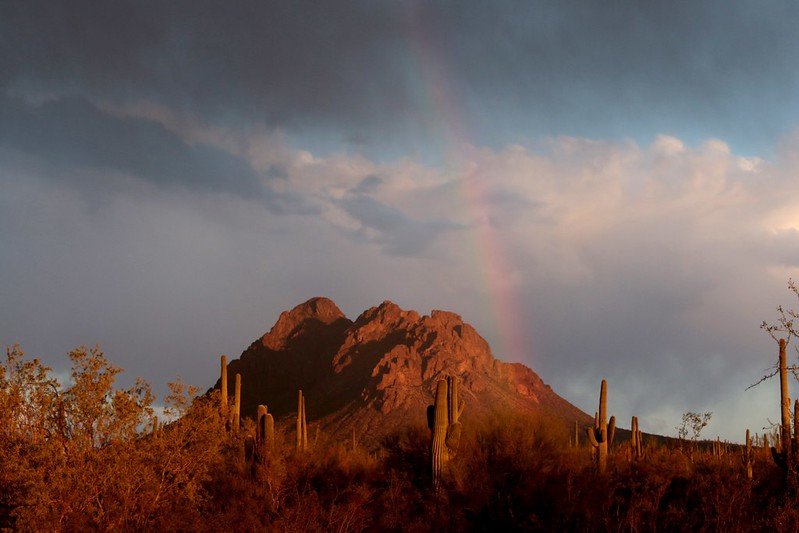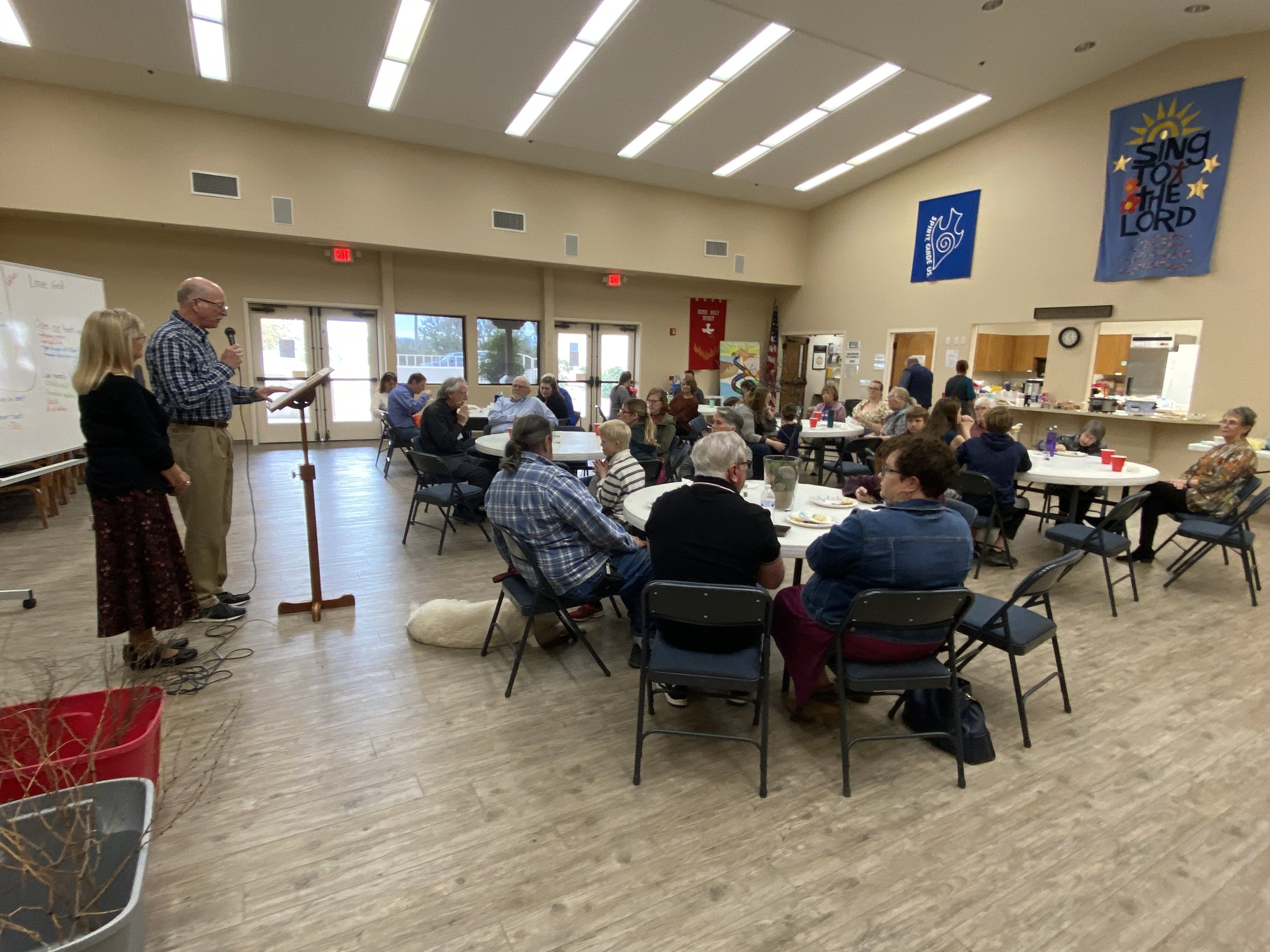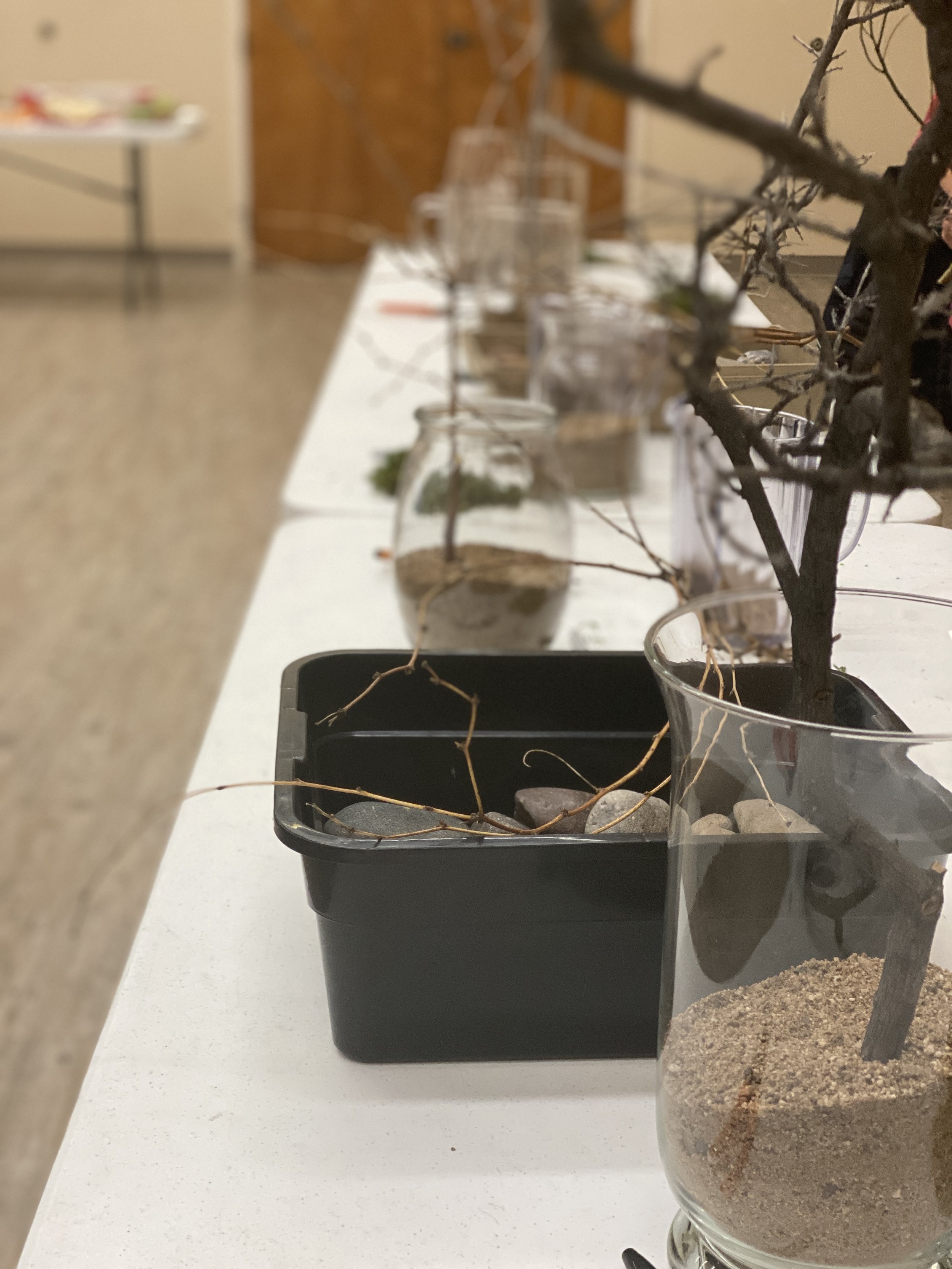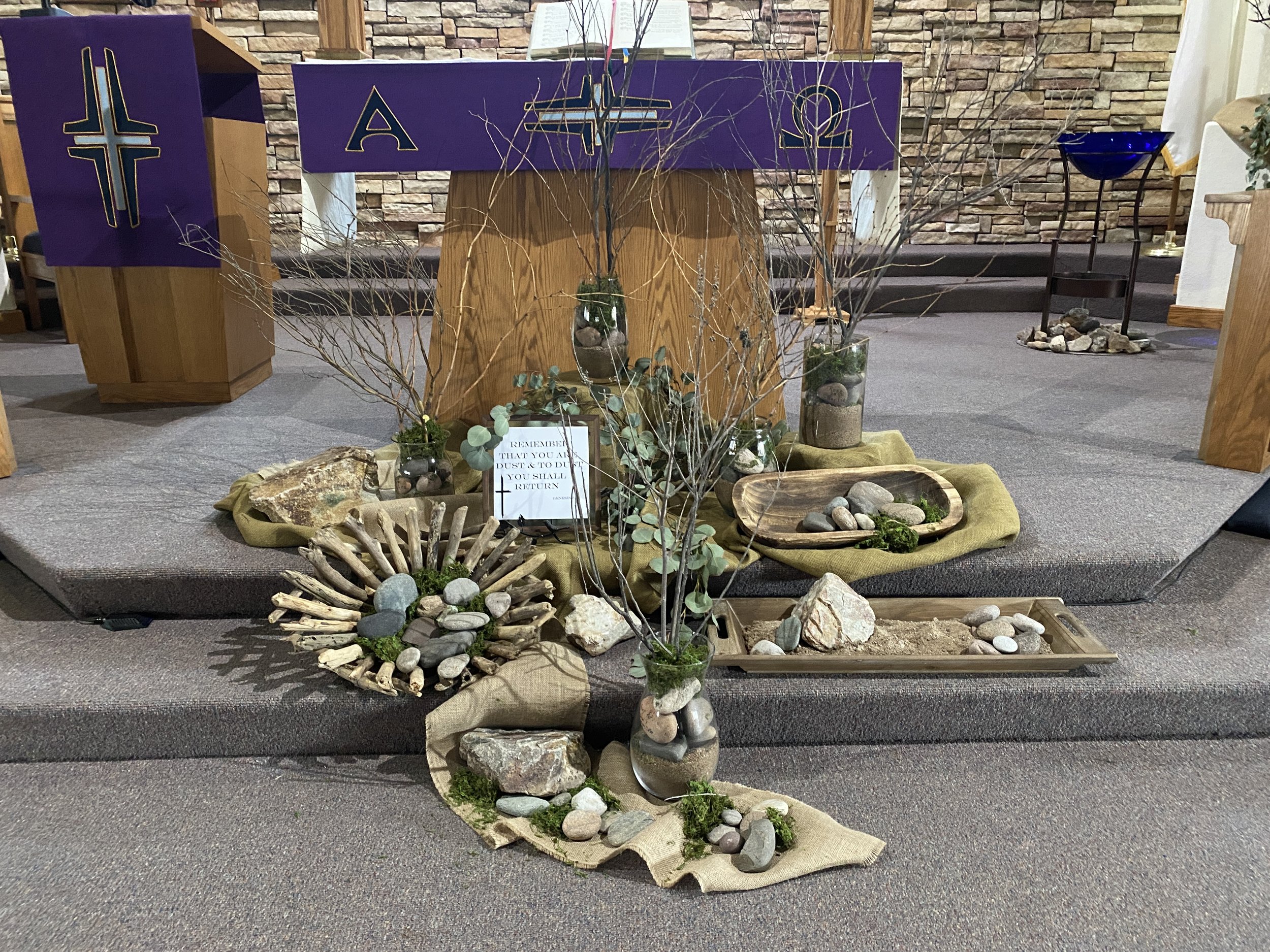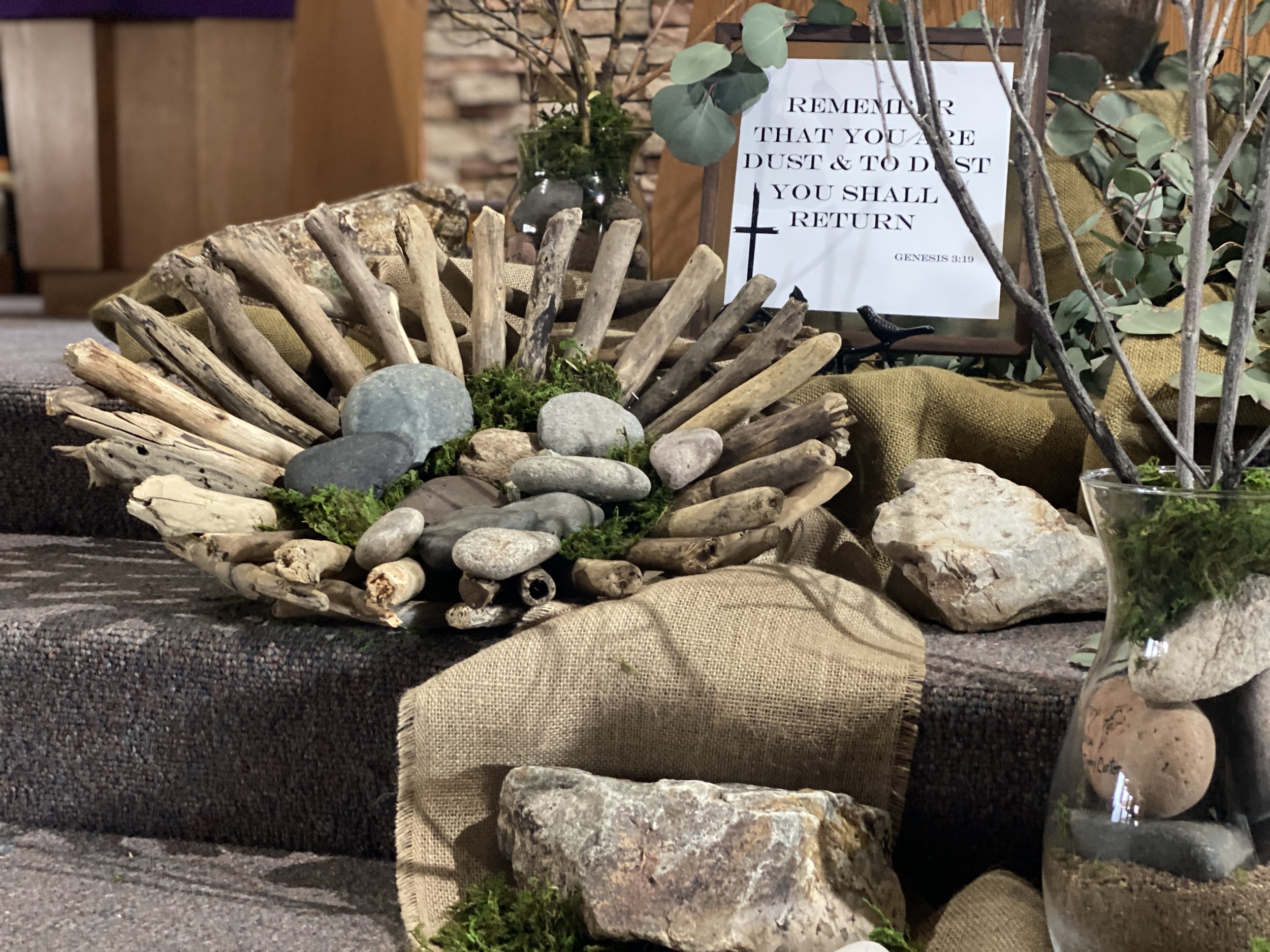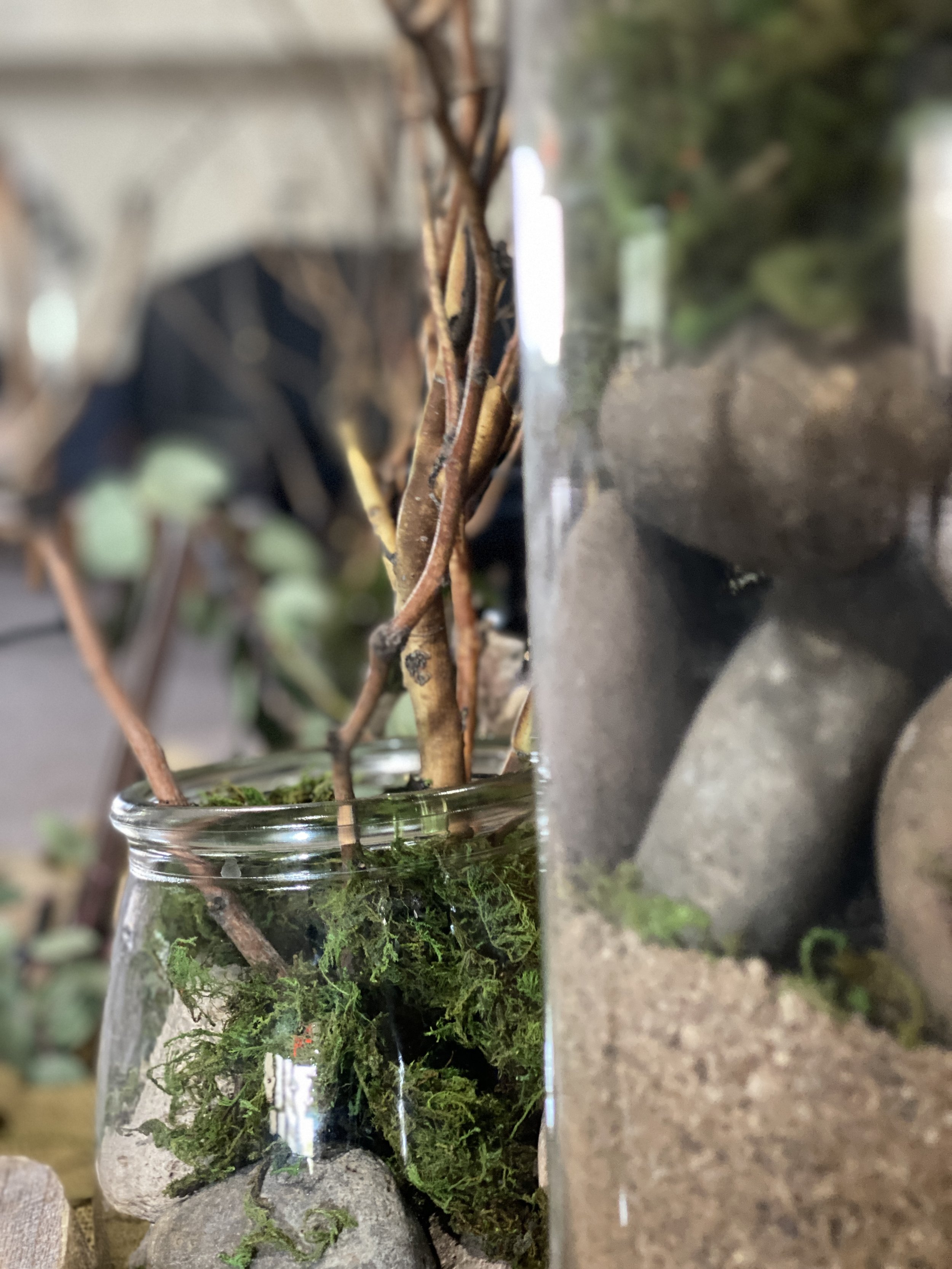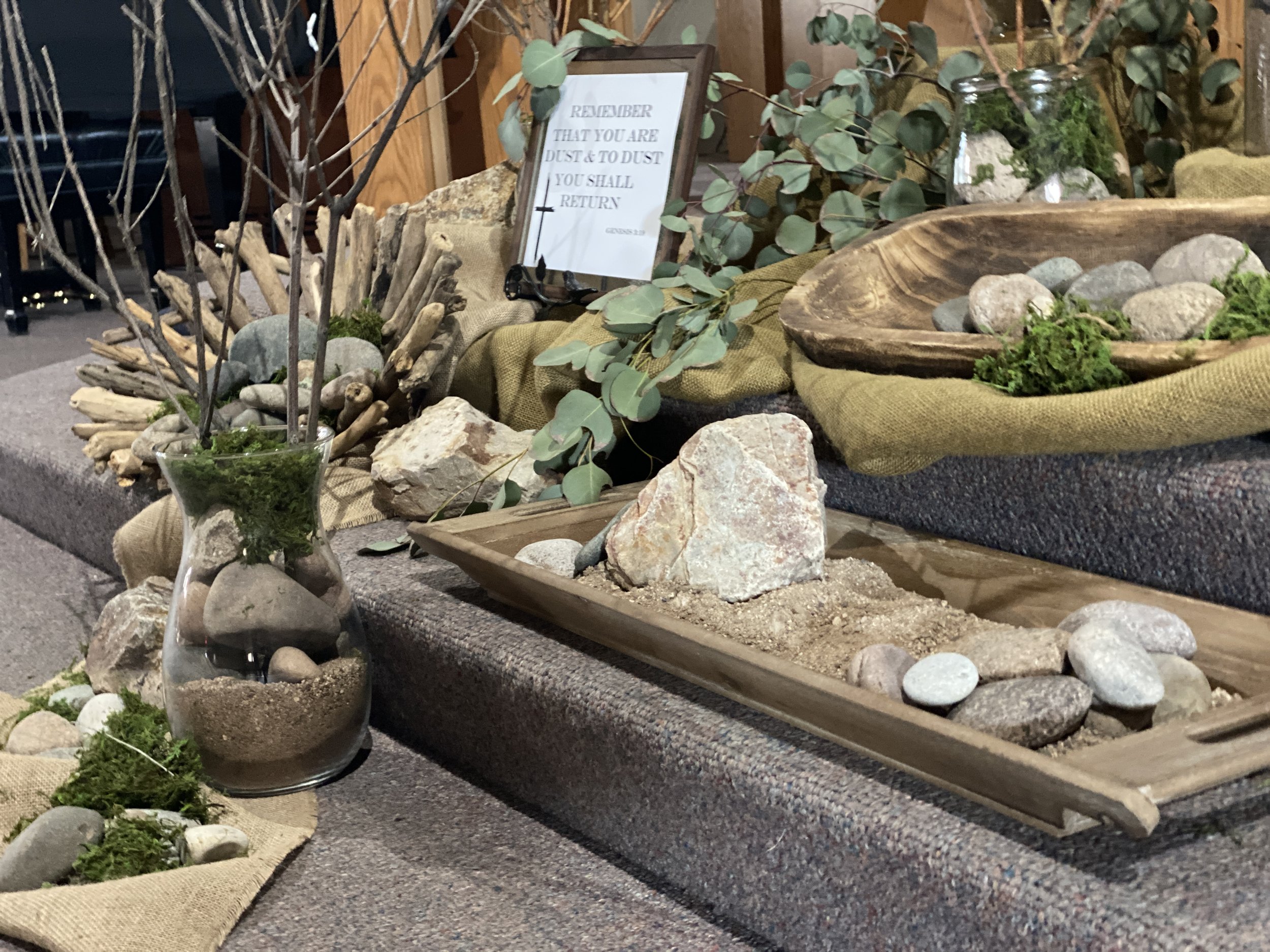It’s been about a year since we finished up the structure of our strategic plan, and we’ve been filling it in more and more as we go. The intention was always that it would be a living document, and that we’d update it as needed, and revisit it often. Our goals, just to review, were to create a new mission statement for Lord of Grace, then have ministry groups meet and pray and brainstorm ways they could implement that mission. So our team met and we came up with this statement:
Love God
Open Our Hearts and Minds
Live Graciously Towards All
So far we’ve been moving along with these. Let me share a few of the accomplishments.
Property brought back the semi-annual clean-up days. I’ve always enjoyed the fellowship as much as the brush cutting. Out next one is March 16th, and we’re doing the pews and chairs inside as well as the grass and brush outside.
Worship started work on the narthex. The last time we did much was back in 2012 when we got a special donation and bought the couches and leather arm chairs. In 2013 the carpet was added to the middle, and since then it’s been a somewhat unintentional collection spot. This time a team met and looked at things like function, values, goals. The team wanted to make the room useful, not just as a hallway, but as a welcome center for visitors on Sundays and a fellowship space after service. Yes, we have the big fellowship hall, but experience shows that after the 10:30am service, we don’t make that left turn.
So the first step was to remove all the things we weren’t going to use. This included the couches, the memorial book stand, the fake ficas, the book shelves that were in my office, then the conference room, then the hallway, then the narthex, and now they’re back where they started. As you can see, the room is pretty empty right now, because the new furniture hasn’t been purchased yet. The plan is to add some new chairs for seating, some side tables for coffee, a new coffee bar, a designated sign-up table, a shelf for books on prayer and health resources, and some things for children’s ministry. These will be purchased as we go, because the funds from the capital campaign are used up. If you’re interested in contributing to a part of the new narthex, just let me know. Here’s the things on our wish list:
L-shaped sign-in table. Kind of like a “welcome desk” you’d see in places, but big enough for clip boards.
Coffee Bar. Small cabinets on wheels for coffee supplies and refreshments. Primarily for after the second service.
Air Pods. Coffee shop grade brewers that will go in the kitchen, used for both services, and have removeable caraffes to go in the narthex after the second service - or any other event.
Area Rug. The current one is from 2013. We’d like to get one of equal or bigger size, with color.
Acoustical panels for the walls. Custom-made in shapes to mimic the rock wall in the sanctuary. Fabric on batting on a wood frame.
The panels are to deal with the sound problem. The original building committee put in $7/foot (in 2002 money) tile in the narthex for durability, I learned from an original member of the church building committee. . This means we don’t have to replace carpet from coffee spills, but the room echoes so you could do Gregorian chant with ease. The couches and center rug mitigated, but with the high ceiling and the rest of the tile, only somewhat. So the team has a plan to put up homemade sound panels on the walls for both color and echo reduction. Eventually, we’d like to get a new center rug with color as well.
Outreach has been super busy going over all the different projects we did as a church and seeing if we wanted to try some new things and retire some old. Just look in the narthex to see the multiplicity of things they’re spearheading.
A big one I’d like to highlight is the partnership with Roadrunner Elementary. The school is often forgotten, being on the west end of the district. It has a good portion of kids with low income, and we’ve stepped up with drives at Christmas and volunteering with their resource center.
Youth and Family has also jump-started some things. As I’ve written about many times, it’s hard for a church our size to field traditional “youth groups”. They require a critical mass of kids the same age, who also get along well, and a lot of staff/volunteer time. On top of that, they are not proven to be the most effective at keeping kids involved in the faith after graduation, in spite of the popularity they have with parents who are church-shopping. Parental faith witness, adults who know kids and care when they show up, the church being there for them in crisis, and getting involved in leadership all make way more difference than age-segregated youth groups.
That said, our focus has shifted back the old “Family Fellowship Sundays”, now called Community Days, we used to do them monthly after the second service, until Covid came. Now they’re back with a bit more organization, including often a theme and specific activities for after eating. It’s taking the little family church potluck and putting some steroids on it. Given that intergenerational witness is the most effective, I love the concept, and they’ve been well attended. We’ll keep these going at least through the school year, and review for fall 2024.
I met with the preschool teachers and our director, America Trujillo, to set goals for their ministry. It’s been a back and forth over the years how we define what it means to be a “church” preschool, as opposed to just a secular one that uses the building. Since there is no one prototype, I decided to have the teachers work on answering this question themselves, and, of course, they came up with far better ideas than I could have. Look for some new art and decorations, some things added to worship, some special drives for the community, and ways for us, as a congregation, to help out.
Of course, all these things are just a sampling, and they happen in addition to the regular work of ministry here at Lord of Grace.
Reflecting on the whole process, I always come back to the slogan about working smarter, not harder. There was a time, mostly in the 80’s and 90’s, when you could grow a church by adding buildings and adding programs. In fact, the more the merrier. People would see either how busy you were, and assume that as an indicator of quality, or would see a program for people “like them” – whatever that means – and find a connection to join. Really big churches still operate this way, because they have finances for large staffs to run things on an ongoing basis. For the rest of us, which is probably 99% of US churches, we run on volunteers and tight budgets. And, as the years go by, we are all finding that the supply of “labor” is not getting any bigger. Fewer people go to church, and those who do are often either busy with kids and family, or wish to retire from regular committee work. So we have to do more with less. It can be disheartening, if you’re trying to keep up with the big place down the road that always seems to have the giant youth group that does whitewater rafting and Christian rock concerts every month. But it’s the relationships, the connections, the spiritual practices, the community being community for each other and the world that has the biggest impact. That we can do by:
Doing what we do better, nor necessarily more.
Making a point to get to know who we’re worshiping with, learning each others’ names and asking each other, honestly, about how life is going
Pray together and support one another in time of need
Invite people to worship and invite people to join us in our service projects
Get involved in, and support one another, in spiritual practices that help people experience Christ.
Christianity is growing through conversion in large parts of the world, in countries with little money and in churches that are small and meet underground. Programs are not why Chinese churches are getting bigger. We can step back, take a deep breath, and see the gifts we have and the impact we can make by working smarter, and more spirit-led, with what God has given us, and get off the treadmill of trying to compete with laser shows and adventure camps.
The new stations of the cross images
12 posters of stations will be set up around the sanctuary from 11am-1pm and you can soak them in at your own pace. At night the images will be on the screen with the worship liturgy.
On that note, this month is Lent, and Holy Week, and Easter. We get it all. Lots and lots of opportunities to worship, pray, reflect, and come closer to God. Worship is something we do well, and a great way to encounter God and one another. So whatever you volunteer in, I’ll personally invite you to join us at the Lent services on Wednesdays, where we contemplate, reflect, and discuss Bible stories about the disciple Peter. We even get original music by Stuart Oliver, composed just for our services. They’re casual and interactive, and you get wine and cheese after (we’re going full Episcopalian for Lent).
Then comes the agape meal for Maundy Thursday, and a new format for Stations of the Cross. We’re adding an 11am-1pm walk through the stations on your own in the sanctuary. The stations are on posterboard, and you’ll have a chance to go around and write and look and pray over each one at your own pace. At night will be a full worship service, with music and sermon and the pounding of nails.
So many ways to step back, breathe deep, and let the Holy Spirit soak in. What happens next happens next, and God will show the way.
Peace,
Pastor Lars




